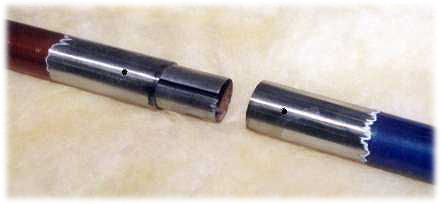How do you decide when to use a slug when joining two sections of pipe together? When is ok not to do this?
What is this technique officially called? Doing searches for things including the words "slug" and "frame" have not gotten me anywhere with google.
I stole this photo from LuckyEight. It demonstrates what I am talking about, but also shows additional holes that were drilled. I am assuming the holes are to increase the surface area of the slug so more welds can be done. What is this technique called?

What is this technique officially called? Doing searches for things including the words "slug" and "frame" have not gotten me anywhere with google.
I stole this photo from LuckyEight. It demonstrates what I am talking about, but also shows additional holes that were drilled. I am assuming the holes are to increase the surface area of the slug so more welds can be done. What is this technique called?



